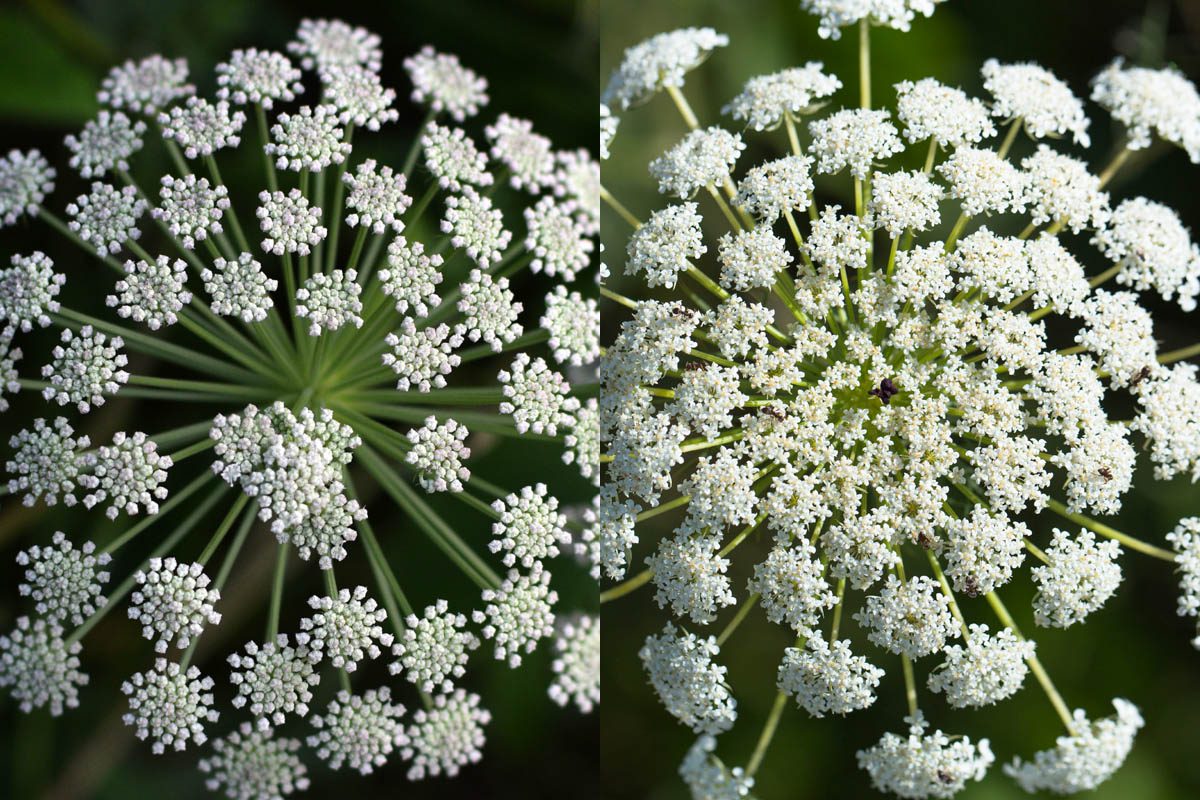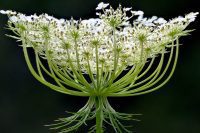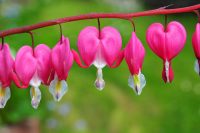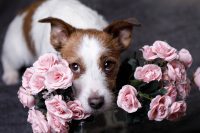Water hemlock and Queen Anne’s lace have a similar appearance, displaying delicate umbel flowers and lacy foliage, but while one is harmless, the other one can be deadly.
Water hemlock
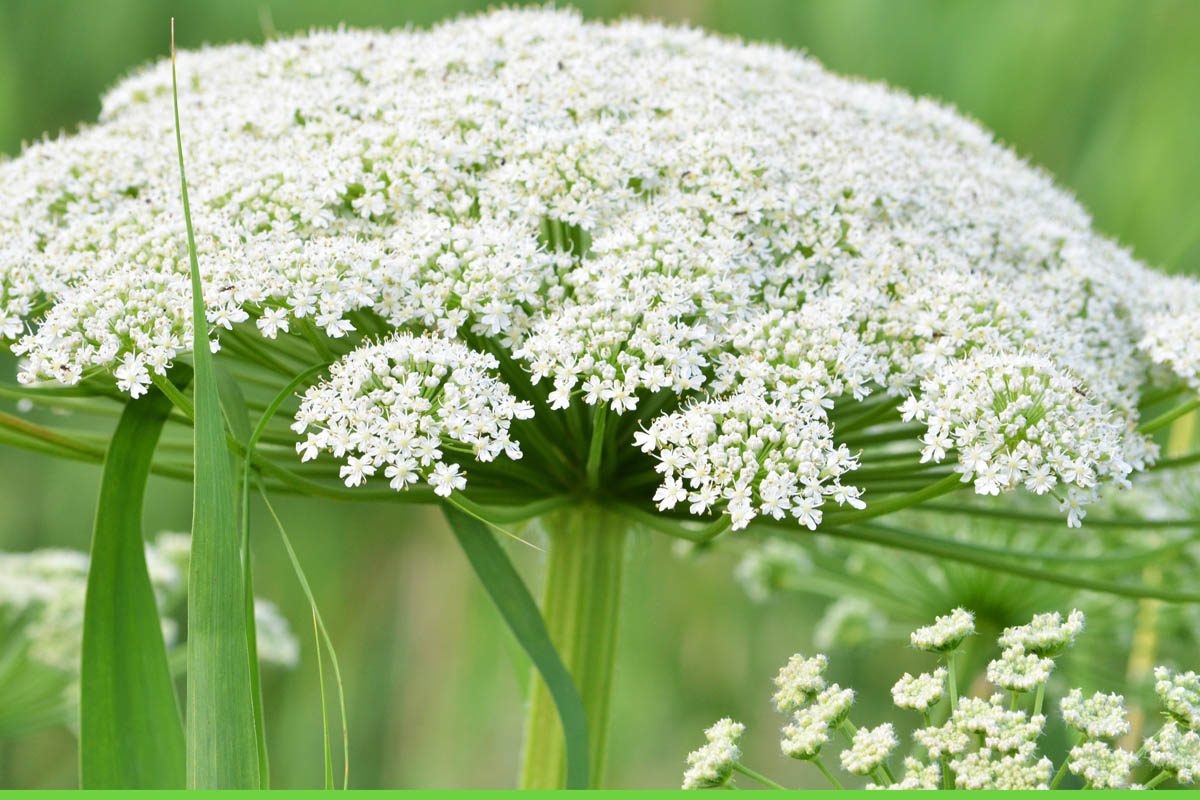
Water hemlock (Cicuta douglasii) is a biennial plant native to North America that is often found in wet, marshy areas. It is characterised by its white, umbel flowers (a type of inflorescence in which a number of flower stalks or pedicels, nearly equal in length, spread from a common centre).
Water hemlock belongs to the Apiaceae family, including carrots and parsley, however, unlike its edible cousins, water hemlock is highly toxic. The toxic principle is cicutoxin, a neurotoxin that disrupts the function of the central nervous system. It is a non-competitive gamma-aminobutyric acid (GABA) receptor antagonist, which means it blocks the action of GABA, a neurotransmitter that typically decreases the activity of nerve cells in the brain. When GABA activity is blocked, nerve cells become overactive.
Water hemlock is often confused with poison hemlock (Conium maculatum), however, they are different plants. The toxic principle of water hemlock is cicutoxin, while the toxic principle of poison hemlock is coniine.
- Symbolism: None
- Common names: Western water hemlock, Water hemlock
- Uses: None
Related: Poison hemlock vs Queen Anne’s lace
Queen Anne’s lace
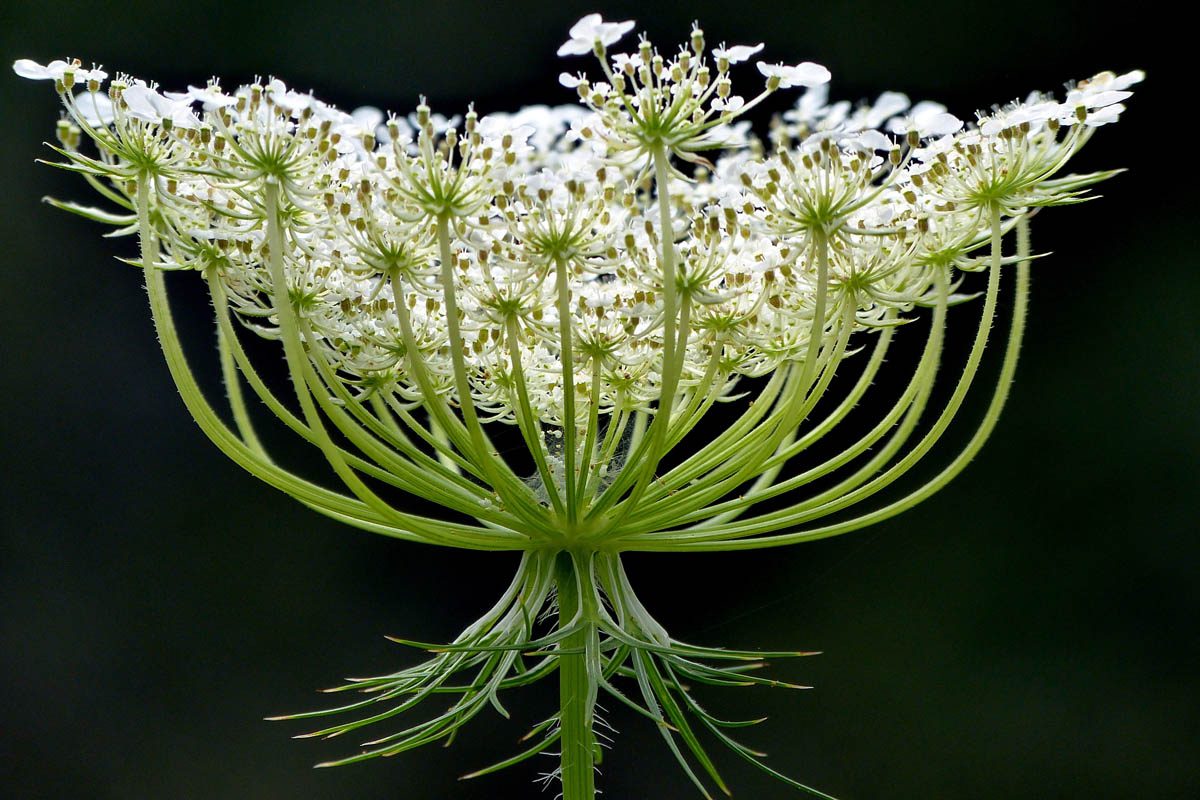
Queen Anne’s Lace (Daucus carota) is a herbaceous flowering plant native to temperate regions of Europe and southwest Asia and is now naturalised in North America and Australia. Like that of water hemlock, the life cycle of Queen Anne’s lace spans over two years, which makes it a biennial plant. In the first year, it produces a rosette of leaves and accumulates reserves in its taproot and in the second year, it creates a flowering stem with umbel flowers.
- Symbolism: Wisdom, purity, sanctuary
- Common names: Queen Anne’s lace, Bishop’s lace, Bird’s nest, Bee’s nest
- Uses: The young taproot is edible and has a similar taste to a carrot, ornamental use in the garden, attracts predatory insects, has been used as a skin toner due to its high potassium levels
Both plants belong to the Apiaceae family, however, is non-toxic. Due to the similarity between the highly toxic water hemlock and Queen Anne’s lace, it is important to differentiate between the two.
Water hemlock vs Queen Anne’s lace
Characteristics |
Water hemlock |
Queen Anne’s lace |
| Scientific Name | Cicuta douglasii | Daucus carota |
| Family | Apiaceae (Carrot family) | Apiaceae (Carrot family) |
| Origins | North America | Europe and southwest Asia |
| Flower colour | White | White, chocolate |
| Flower type | Small, white flowers in umbrella-shaped clusters (compound umbels) | Small, white flowers in a flat-topped cluster (umbel), often with a single dark red flower in the centre |
| Bloom time | Mid summer | Summer to autumn (fall) |
| Bracts | No bracts | Bracts that resemble a bird’s nest, are located where the flower stems meet the main stalk. They are divided into three or more finely divided, narrow segments, giving them a feathery or spiky appearance. |
| Leaves | Compound, serrated with sharply toothed leaflets | Compound, pinnate, with finely divided, fern-like leaves |
| Stem | Smooth, green and hollow | Hairy, solid |
| Root | Contains multiple chambers | Edible when young, resembles a carrot |
| Seeds | Small, flat, round disks with noticeable ridges | Oval and covered with tiny, fine bristles |
| Smell | When crushed or bruised, the plant emits an unpleasant odour | When crushed or bruised, the plant (especially the root) smells like a carrot |
| Height | Up to 300 cm (10 feet) | 94-180 cm (3-6 feet) |
| Habitat | Commonly found in wet habitats like marshes and along stream banks | Prefers drier habitats, often found in meadows, pastures, and along roadsides |
| Toxicity | Highly toxic due to cicutoxin, especially the root | Mildly toxic (furocoumarins) |
Safety
Do not forage for any plants unless you are absolutely 100% certain you can correctly identify them. This is especially important for water hemlock due to its extreme toxicity. All parts of the plant are toxic, however, the roots contain the greatest level of toxins.
Always buy seeds and seedlings from a reputable source such as a nursery, to avoid inadvertently growing the wrong plant.
Julia is a writer and landscape consultant from Wollongong with a love of horticulture. She had been an avid gardener for over 30 years, collects rare variegated plants and is a home orchardist. Julia is passionate about learning and sharing her knowledge of plant propagation and plant toxicology. Whether it’s giving advice on landscape projects or sharing tips on growing, Julia enjoys helping people make their gardens flourish.
